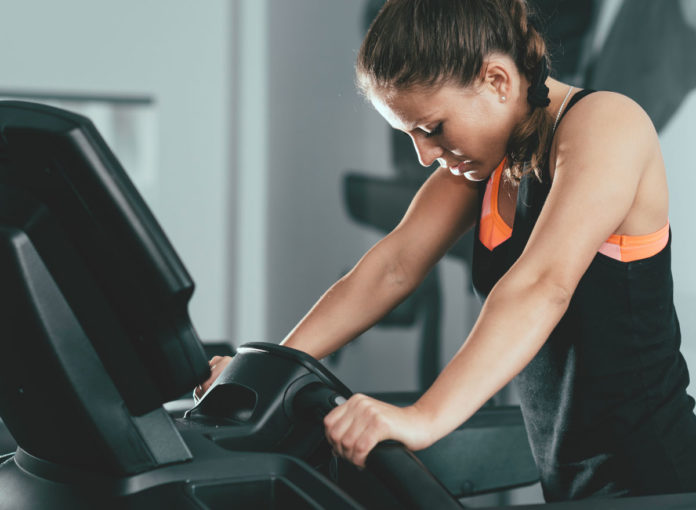Science and research methods are ever-evolving, which means weight loss recommendations are constantly being revised. So what we may have thought was healthy decades ago (like making sure everything you’re eating is low-fat), has now been debunked as actually promoting weight gain. So if you think you’re eating healthy, yet gaining weight, it could be because what’s “healthy” to you is anything but.
To make sure you’re not falling victim to diet-derailing health myths or following antiquated advice, we’ve rounded up bogus “healthy” habits that won’t just stall your weight loss progress, but they may also cause you to gain a few pounds. See which wacky health tips have fooled you—and for more on healthy eating, don’t miss 15 Underrated Weight Loss Tips That Actually Work.
As evidence continues to stack up against sugar, consumers are looking for ways to have their cake and eat it too—literally. To meet the demand, food makers are churning out sugar-free packaged foods like puddings, cookies, and soda—but don’t get it twisted; these options aren’t going to help you trim down. In fact, they may have the opposite effect on your gut. Many artificial sweeteners cause insulin (our body’s primary fat-storage hormone) to be released in your gut because they’re sweet like sugar. Plus, when manufacturers take sugar out of products, they often add in bad-for-you fats like palm oil and cream to make up for the taste, They also use sugar alcohols, which can have a laxative effect if eaten in excess. The bottom line: If you’re craving something sweet, skip “sugar-free” options and eat what you’re really craving in moderation. (If you’re diabetic, consult with your doctor for healthy, safe ways to cut down on processed “sugar-free” foods in your diet.) For even more ways to dial back on the sweet stuff and clobber cravings, check out these 20 Tips For How to Cut Out Sugar From Medical Experts!
RELATED: Sign up for our newsletter to get daily recipes and food news in your inbox!
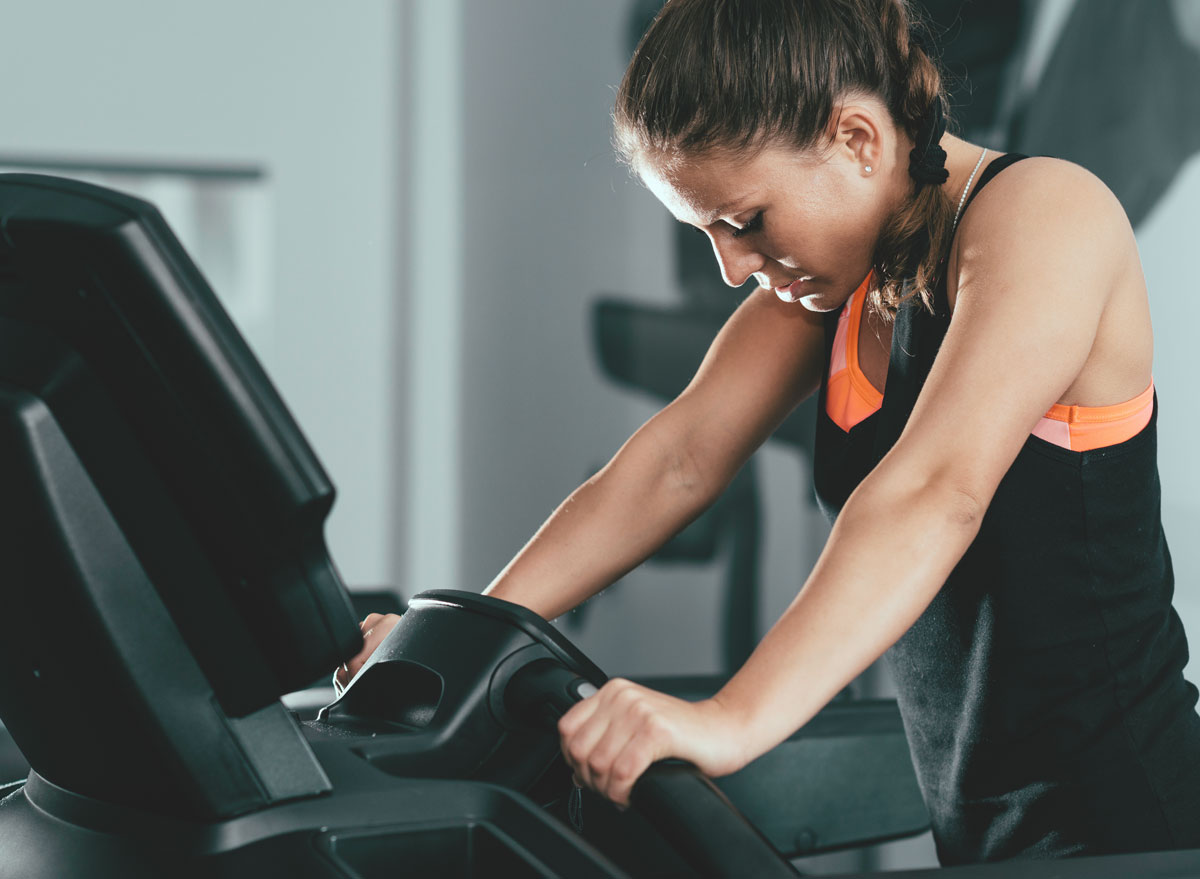
It’s great that you’re so committed to your workout routine, but if you’re spending all your free time sprinting and lifting you’re not giving your body enough time to recover and rebuild, which can increase your risk of injury and actually hinder your progress, explains Jay Cardiello, a fitness and nutrition expert who has sculpted the bodies of some of the music scene’s biggest superstars, including 50 Cent and J.Lo. To ensure you’re giving your body the downtime it needs to lean out, Cardiello suggests taking one or two days off per week.
STAY INFORMED: Sign up for our daily newsletter to get the latest food news delivered straight to your inbox.
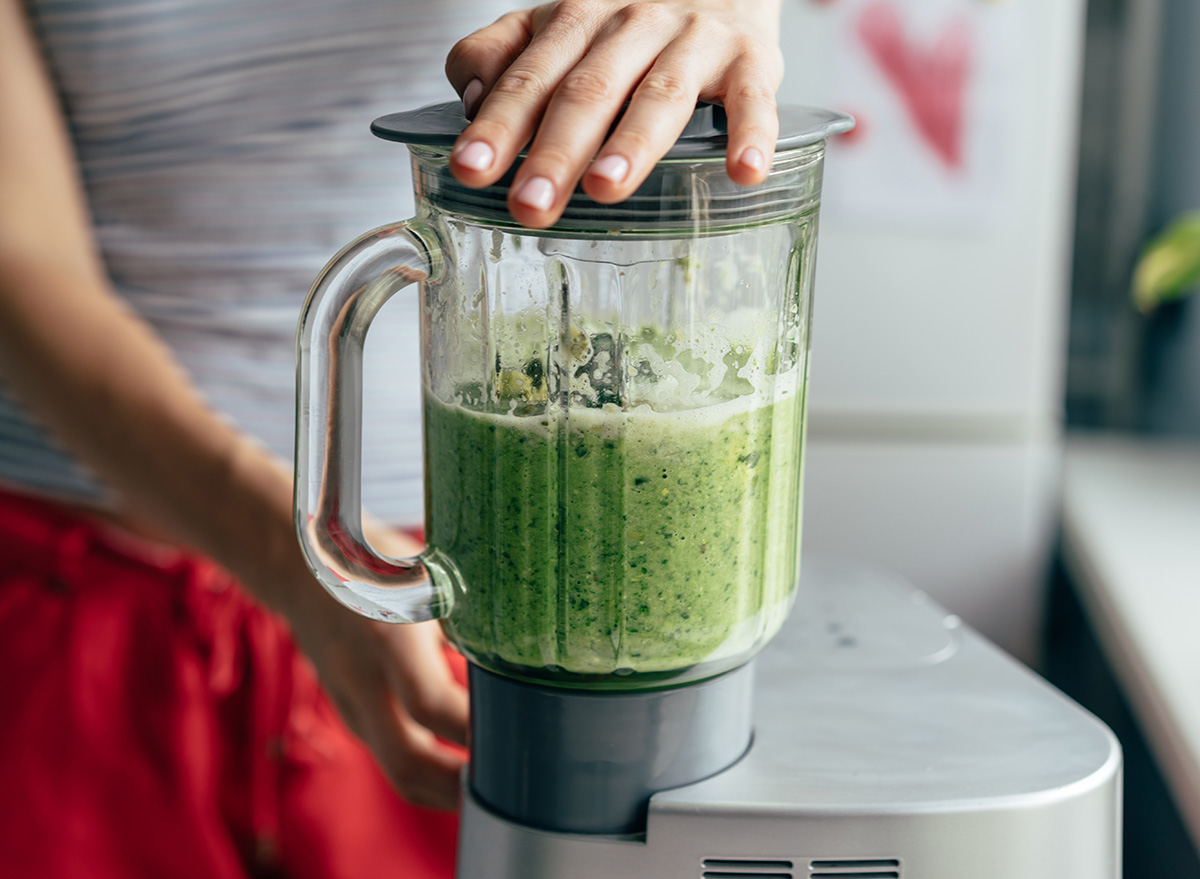
Whether it’s a long run, a killer barre sesh, or a hot yoga workout, it’s a mistake to feel like it isn’t complete without a trip to the beverage bar. “If you’re in the habit of ‘refueling’ with a protein shake or smoothie after every single workout, you may want to reconsider,” says registered dietitian Kayleen St. John, MS, RD, an adjunct professor of Nutrition in Food Studies at New York University. “For most workouts longer than one hour in length, eating a protein-rich meal afterward is completely sufficient. Consuming a protein shake in between is likely unnecessary and instead just increases caloric consumption.” (See: 7 Ways Smoothies Will Make You Gain Weight.) If you don’t plan on having a meal in addition to your post-workout smoothie, then by all means, drink the smoothie. In fact, make it one of these 22 Best Protein Shake Recipes for Weight Loss.
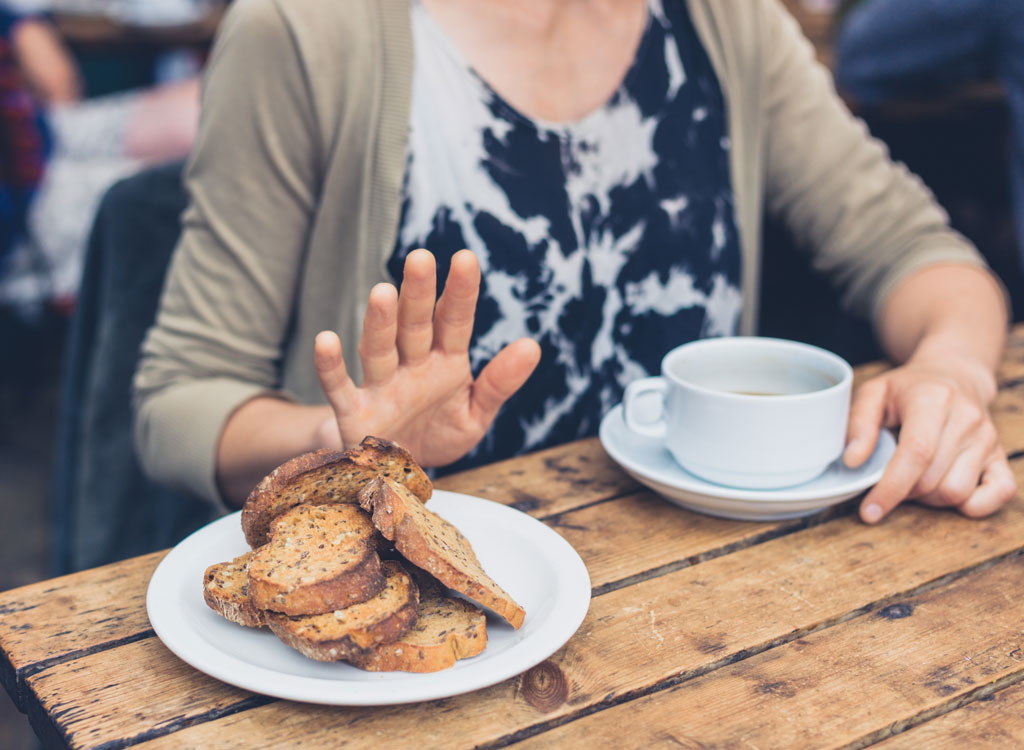
If you regularly skimp on calories on days you have plans to grab drinks or a special dinner after work, you could be doing more harm than good. The reason: It’s hard to maintain good eating habits and portion control when you’re starved. To avoid overeating, snack on a cup of baby carrots or an ounce of almonds before you leave to meet your friends. If you’re drinking alcohol, limit yourself to two drinks at most to save on calories and keep from getting inebriated and losing your self-control.

With more us relying on snacks rather than full-on meals to fuel our day, it seems everyone is on the hunt for the next nibble that can keep them trim. Unfortunately, marketers are on to us. And they’re slapping misleading health-centric phrases like “whole wheat,” “gluten-free,” and “low-fat” on foods that are full of as much (and many times, much more) sugary treats like ice cream and cookies. So if seemingly healthy snacks like flavored yogurt, whole-grain cereal, pretzels, and dried fruit are part of your snacking repertoire, you might be working against your workout goals.
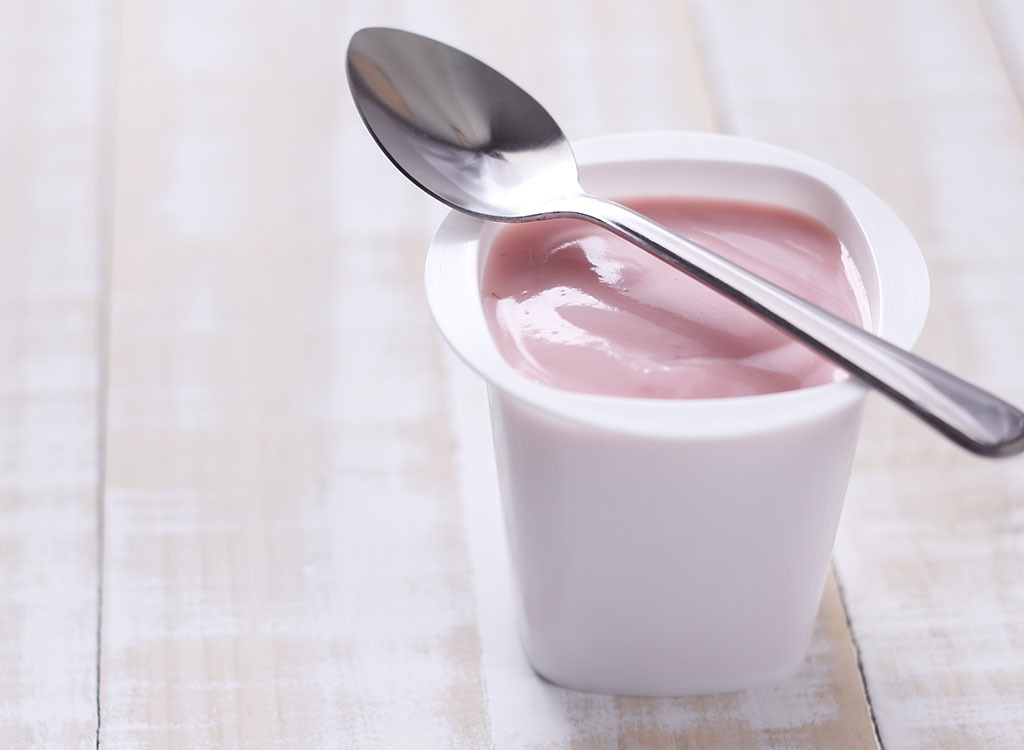
You know that eating trans fats can increase your risk of heart disease, weight gain, and stroke, so you’re smart to stay away. But not all fats need to make your “do not eat” list. In fact, consuming healthy fats such as olive and coconut oil can actually help you slim down and stay healthy. “Fats not only help us absorb many of the vitamins from our diets, but they also help keep us fuller longer, which can aid weight loss efforts,” explains registered dietitian nutritionist Lori Zanini, RD, CDE. Not to mention, reduced-fat products tend to replace harmless fats with low-performing carbohydrates that digest quickly—causing a sugar rush and, immediately afterward, rebound hunger. Simply put, they can make you gain weight. So stick to full-fat processed food (if you’re going to eat it at all) and work a few full-fat fresh products into your diet, too. Registered dietitian Lauren Slayton, MS, RD incorporates things like olive oil, avocado, fish, butter, ghee, and coconut oil into her daily diets. To find out what other foods are worth eating regularly, check out these 40 Foods Nutrition Experts Told Us You Should Be Eating Every Day.
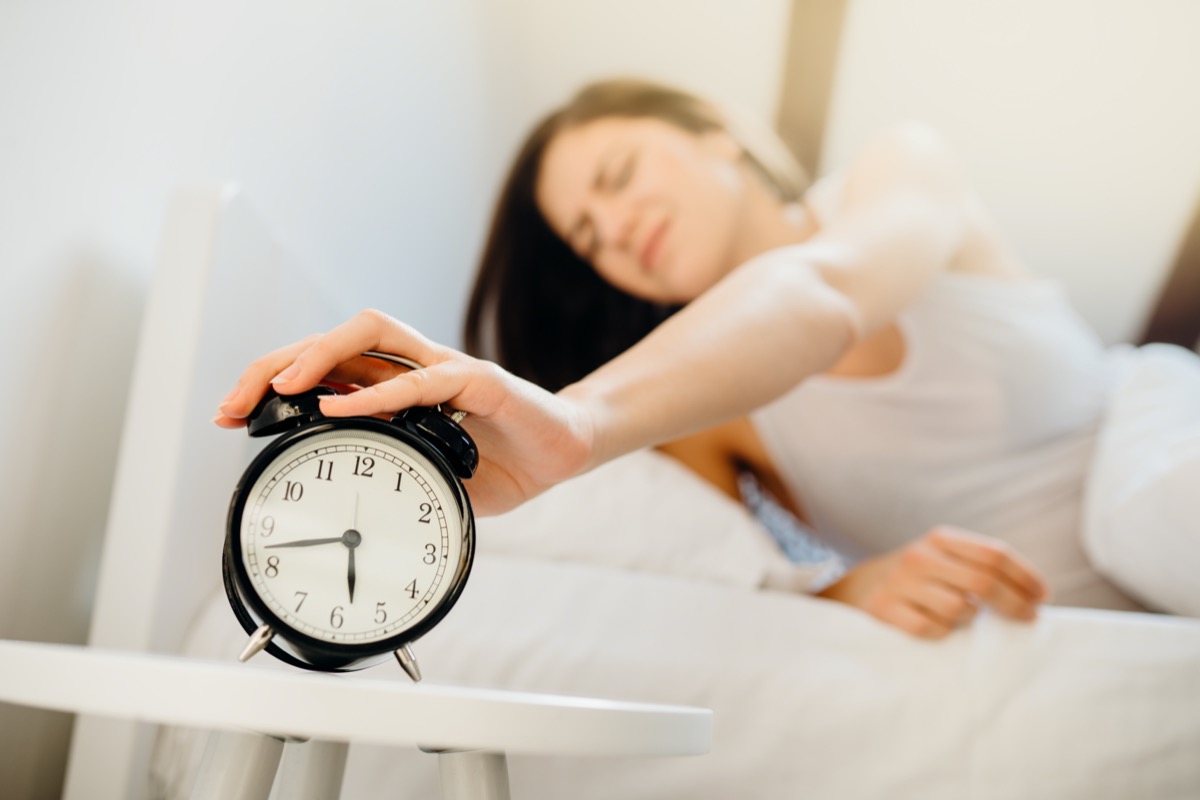
Getting in a workout first thing in the morning is a great way to boost energy and get your day started on a healthier note. The problem? If you set your alarm for 5 a.m. but didn’t get to bed until after midnight, you could be missing out on crucial sleep. Dieters who sleep five hours or less put on 2½ times more belly fat, according to research from Wake Forest. If you want to hit the gym before dawn, make sure you are going to bed at a reasonable hour to get the recommended six to eight hours her night.

Unfortunately, it is possible to have too much of a good thing. While skimping on sleep is associated with weight gain, researchers at Wake Forest found that those who sleep more than eight hours a night packed on more belly fat, the dangerous kind that’s associated with heart disease, diabetes, and stroke. Shoot for an average of six to seven hours of sleep per night—the optimal amount for weight control. And burn calories overnight with these 30 things to do 30 minutes before bed to lose weight.
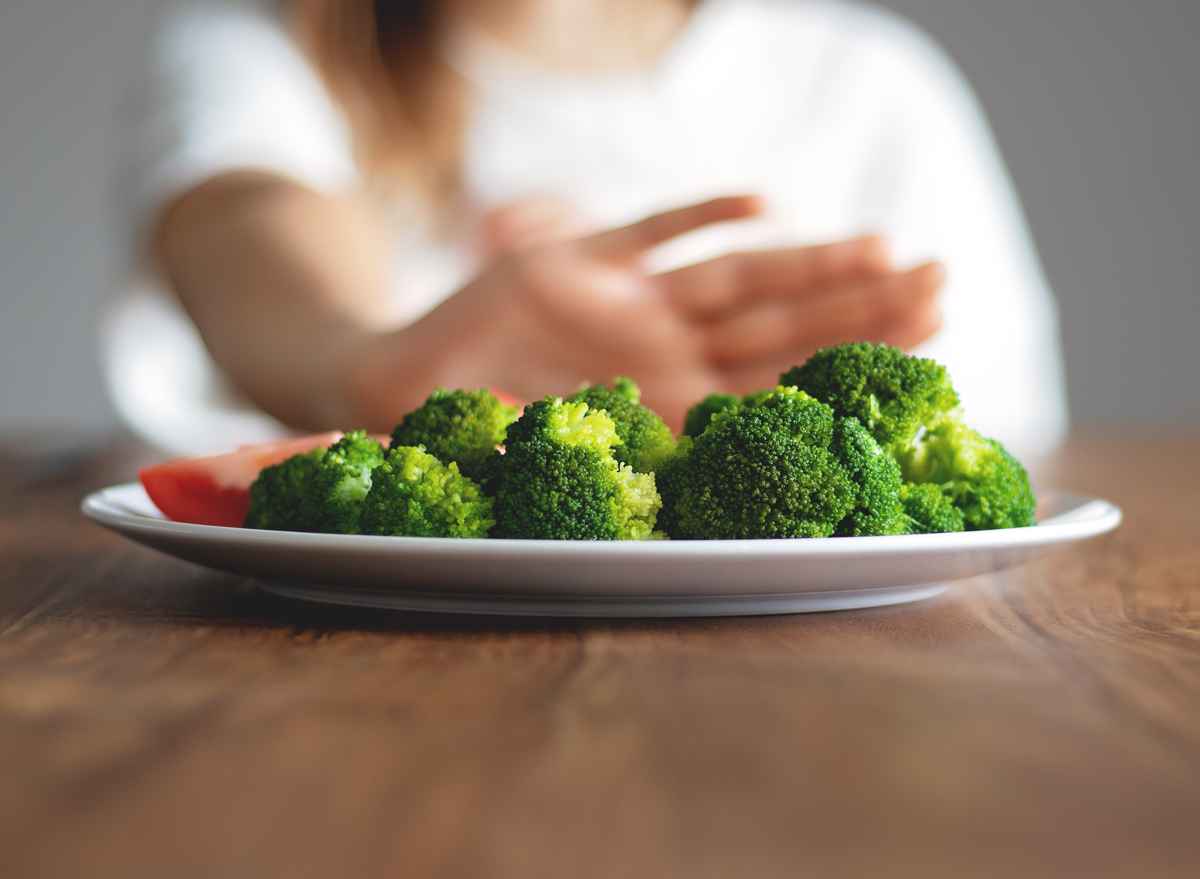
According to a survey from the Calorie Control Council, 17 percent of Americans skip meals to lose weight. If that sounds like a strategy you live by, it might very well be responsible for your expanding waistline. That’s because skipping meals slows your metabolism and boosts your hunger. That puts your body in prime fat-storage mode and increases your odds of overeating at the next meal. To keep your metabolism revving throughout the day, focus on small, protein- and fiber-packed snacks or small meals every three to four hours. You will not only burn more calories eating a series of smaller meals but also avoid the afternoon crash and end of the workday slump.
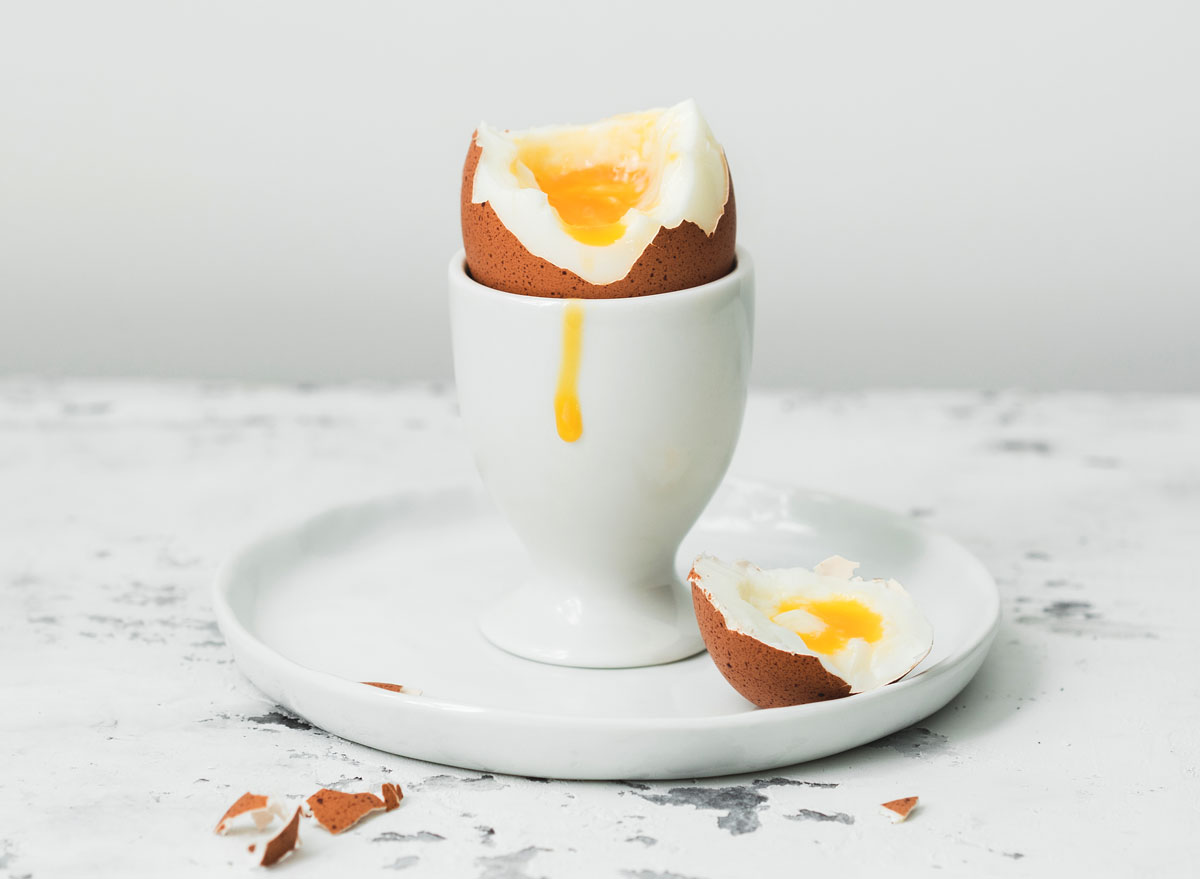
Egg white omelets might be your brunch and breakfast go-to, but it’s time you give those silky, golden yolks some love. They’re a great source of fat-incinerating choline and vitamin D, a vitamin most Americans don’t eat enough of. Why’s that matter? Low levels of vitamin D have been linked to abdominal obesity. Also, the yolks contain healthy fats that boost satiety, making it less likely you’ll overeat later in the day, explains St. John.
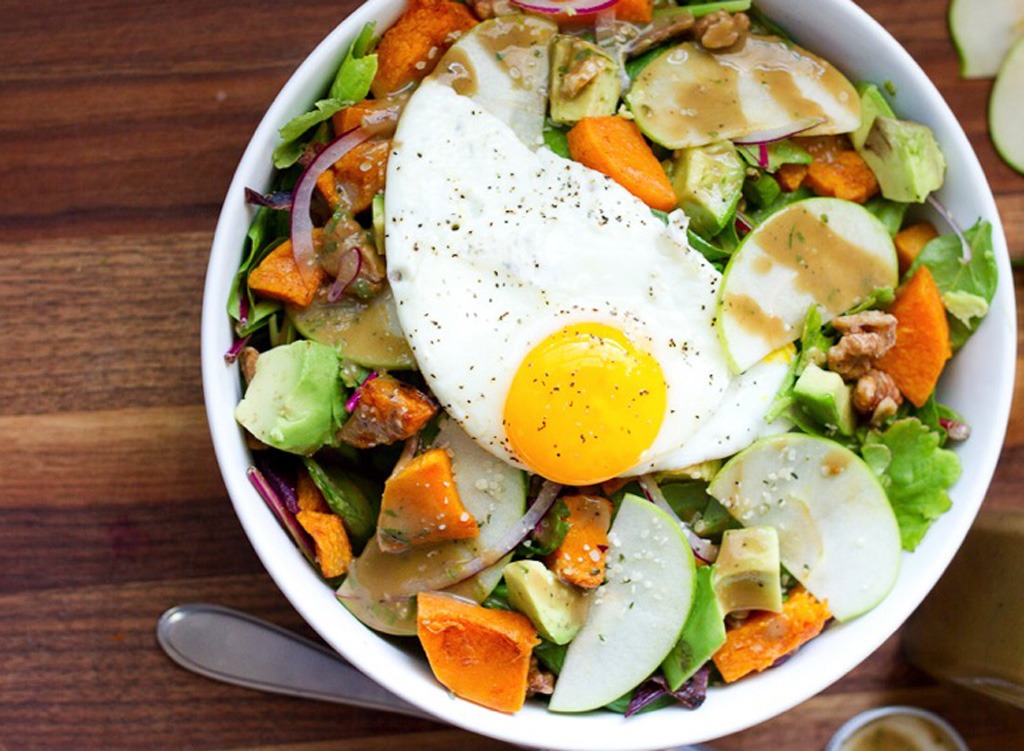
Just because your meal is healthy doesn’t mean you don’t have to practice portion control. Remember, even virtuous foods have calories so if you overeat things like avocado, oatmeal, and chicken you can pack on the pounds. Half of your plate should be filled with veggies, and the remaining half should hold a cell phone-sized serving of lean protein, a fist-sized serving of grains, and a bit of fat no larger than the size of your pointer finger.
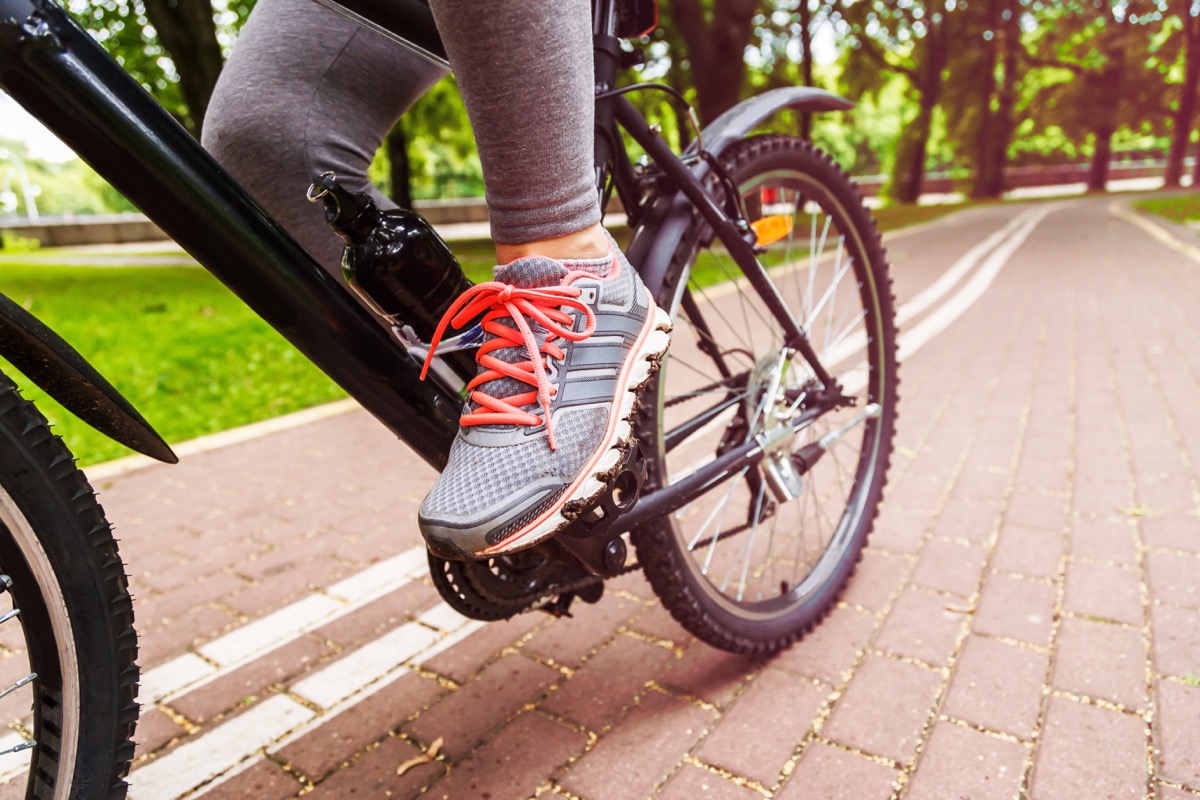
While working out is critical for maintaining your metabolism if you haven’t switched up your workout routine recently, your six-pack might melt into a barely-there two-pack, says Dr. Sean M. Wells, personal trainer and author of Double-Crossed: A Review of the Most Extreme Exercise Program. “If you’ve been doing the same workout for the past few months, your body isn’t being challenged anymore, meaning it’s not burning as many calories as it otherwise could,” he explains. So if you typically stick to spin classes, consider checking out a boot camp or Zumba class to give your metabolism a kick. Can’t bear to leave your Schwinn? Look for a more intense class or challenge yourself by turning up the resistance (yes, even when the instructor doesn’t tell you to).
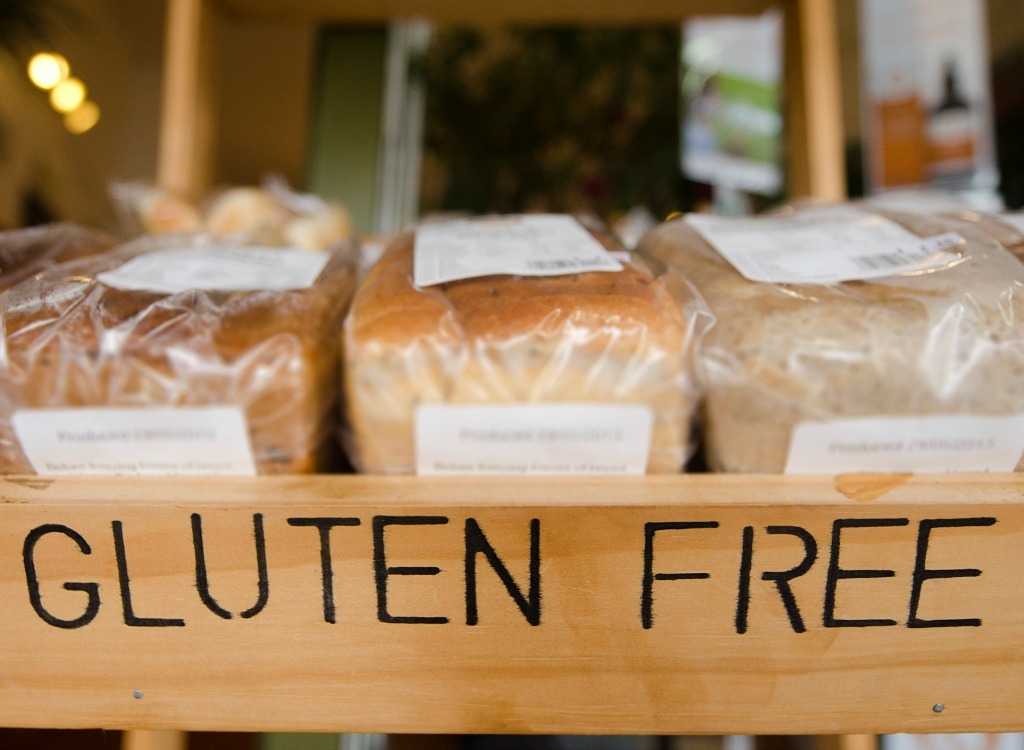
For some people, eating gluten-free is a necessity. But for those who think “gluten-free” means weight loss-friendly, beware the health halo. Most gluten-free breads are made from refined grains, with white rice flour being the most popular. These breads have double the carbs of whole-wheat breads. Plus, studies show that people who eat whole grains have less belly fat than those who eat refined grains. If you must go gluten-free, due to celiac disease or a similar diagnosis, look for gluten-free breads made with a mixture of seeds and naturally gluten-free whole grains, such as millet and amaranth. Otherwise, keep bread in your diet, as it’s a great source of whole grains and fiber, just make sure it’s one of the Best Store-Bought Breads For Every Health Goal.
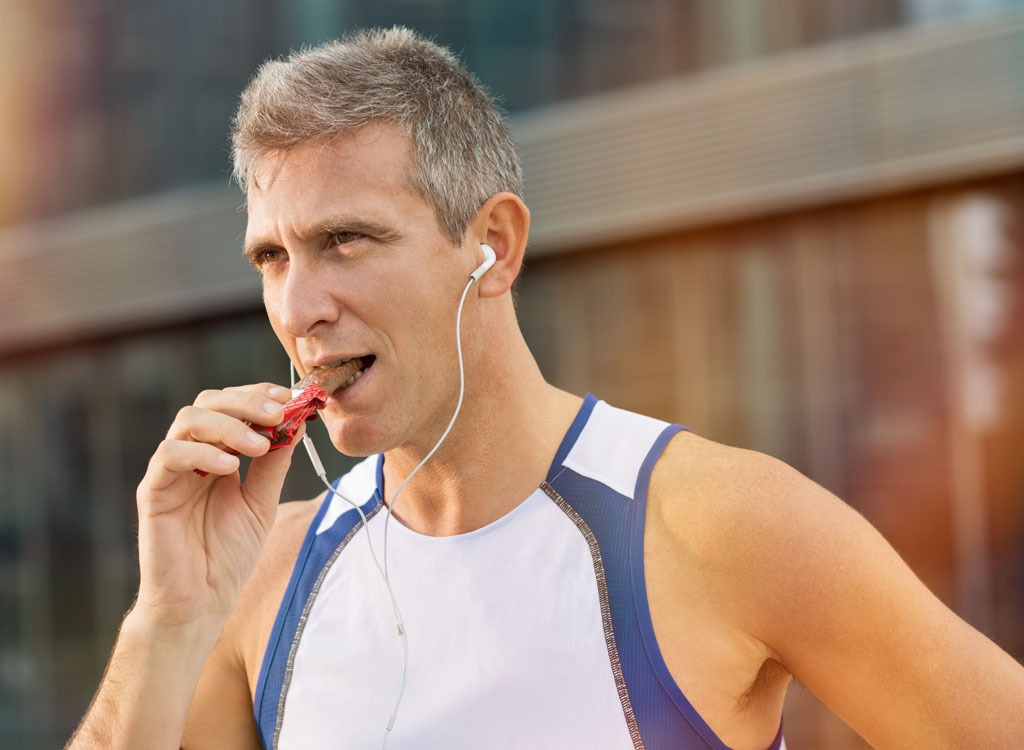
“Trainers have ingrained into our brains that we must eat something before and after a workout,” says registered dietitian Lisa Hayim, MS, RD and founder of The Well Necessities. “So much so, that we neglect our actual feelings of hunger and satiety, and thoughtlessly stuff something into our mouths. Although pre- and post-workout eating is essential for athletic recovery, many people have enough fuel from a recent meal they consumed and do not need those extra calories. A good rule of thumb is if your last meal was three or more hours before your workout, grab a carbohydrate-rich snack (30 grams of carbohydrates or less),” she explains.
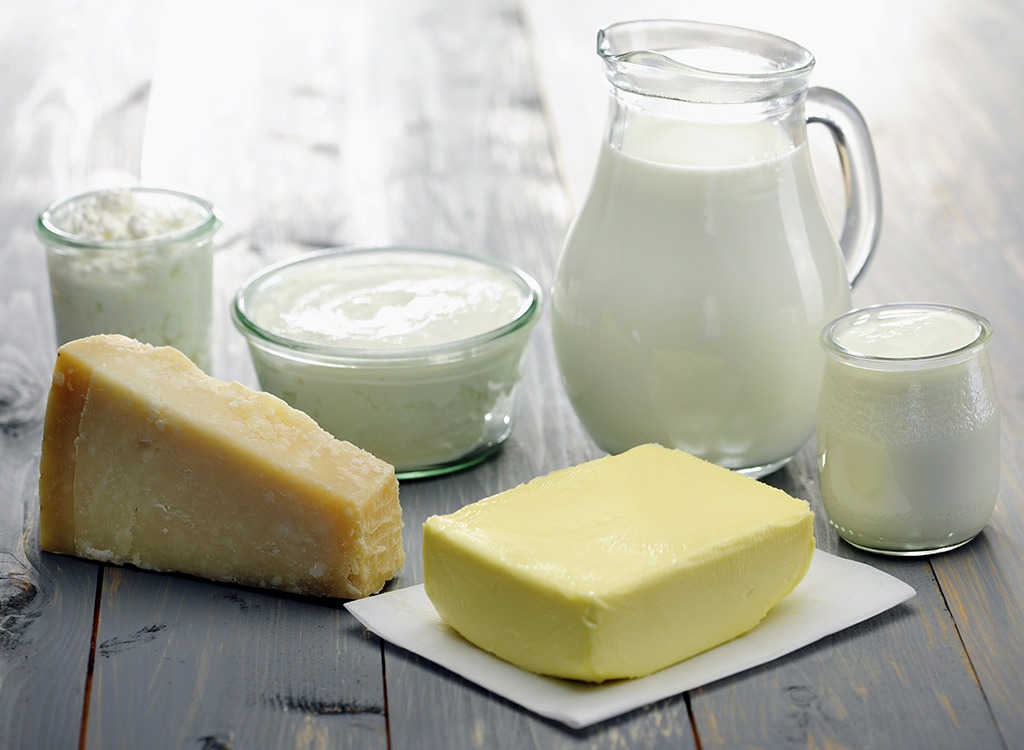
Unless you’re lactose intolerant, steering clear of milk, Greek yogurt, and other popular dairy-based breakfast foods to save calories may be doing you more harm than good. The primary reason: Calcium plays a key role in regulating the way the body metabolizes food. Specifically, it determines whether we burn calories or tack them on as excess fat. On the flip side, a calcium-rich diet can help you burn more flab, according to a University of Tennessee at Knoxville report, which is exactly what you want if weight loss is your goal. If you have to go dairy-free, that’s not a problem. Just make sure to add these The 20 Best Calcium-Rich Foods That Aren’t Dairy to your diet.
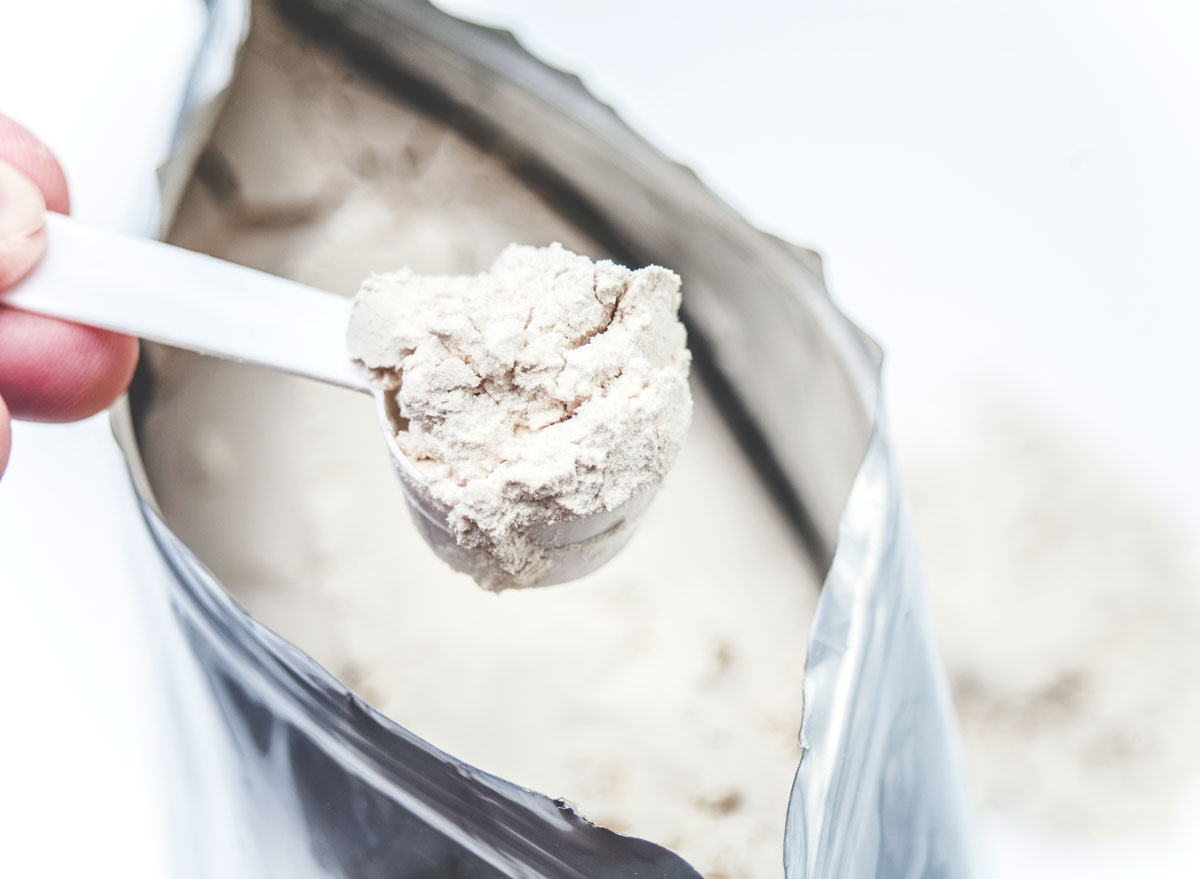
While protein may be among the most talked-about nutrients among dieters, eating too much of the stuff can cause weight gain. When you take in more protein than your body needs (which is about 0.45 grams per pound for men and 0.35 grams per pound for women) the extra protein will likely be stored as fat, while the excess amino acids will be excreted. Not convinced? Consider this: In one recent study of more than 7,000 study participants, researchers found that those who ate high-protein diets had a 90 percent greater risk of gaining more than 10 percent of their body weight during the course of the study than those who ate less of the stuff. Yikes!
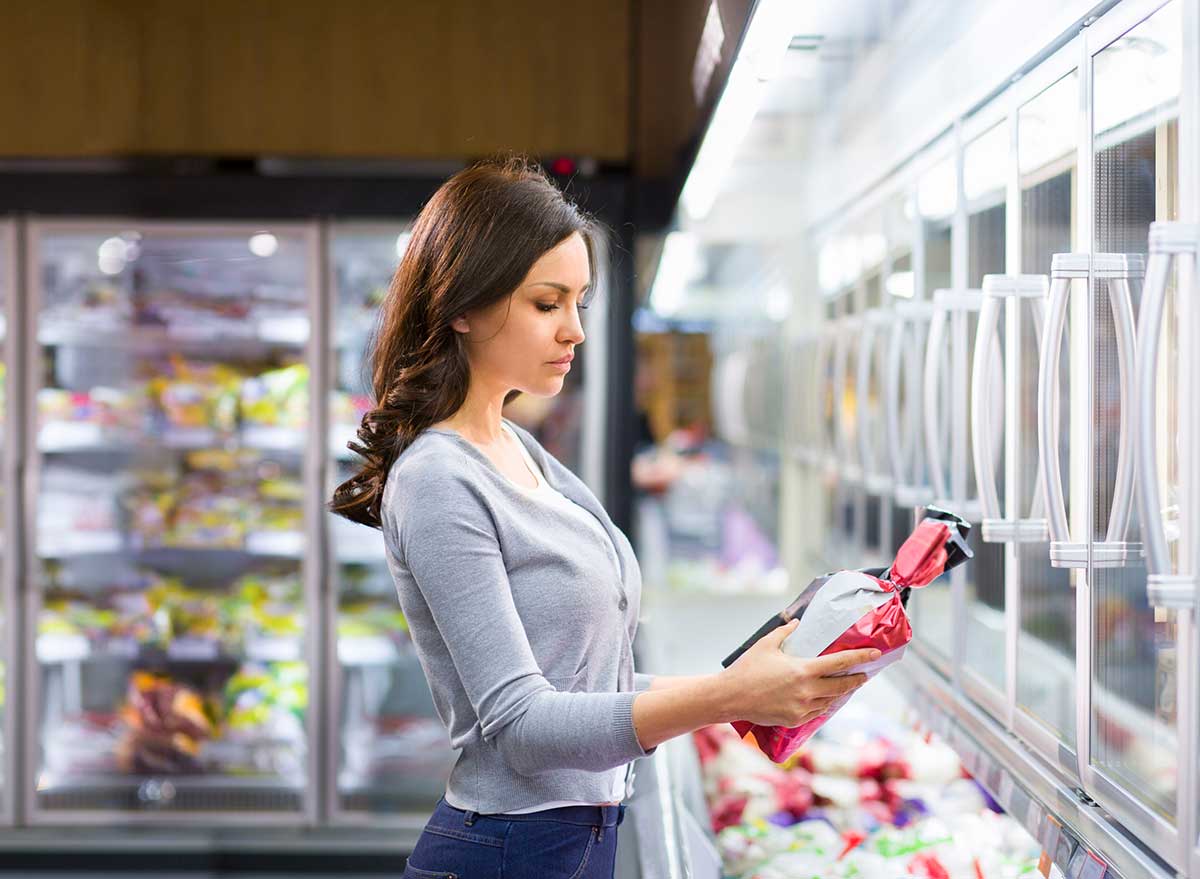
In a recent study, people estimated snacks labeled “organic” to be lower in calories, more nutritious and even tastier than when reviewing the same snacks without the “organic” label. The only problem? That’s hardly the case. Plus, all-natural isn’t a regulated term, so marketers can slap this on products that are still highly processed, caloric, and loaded with sugar. If you down these groceries without looking at the label, you may ingest more calories than you realize, which can derail your rapid weight loss efforts.
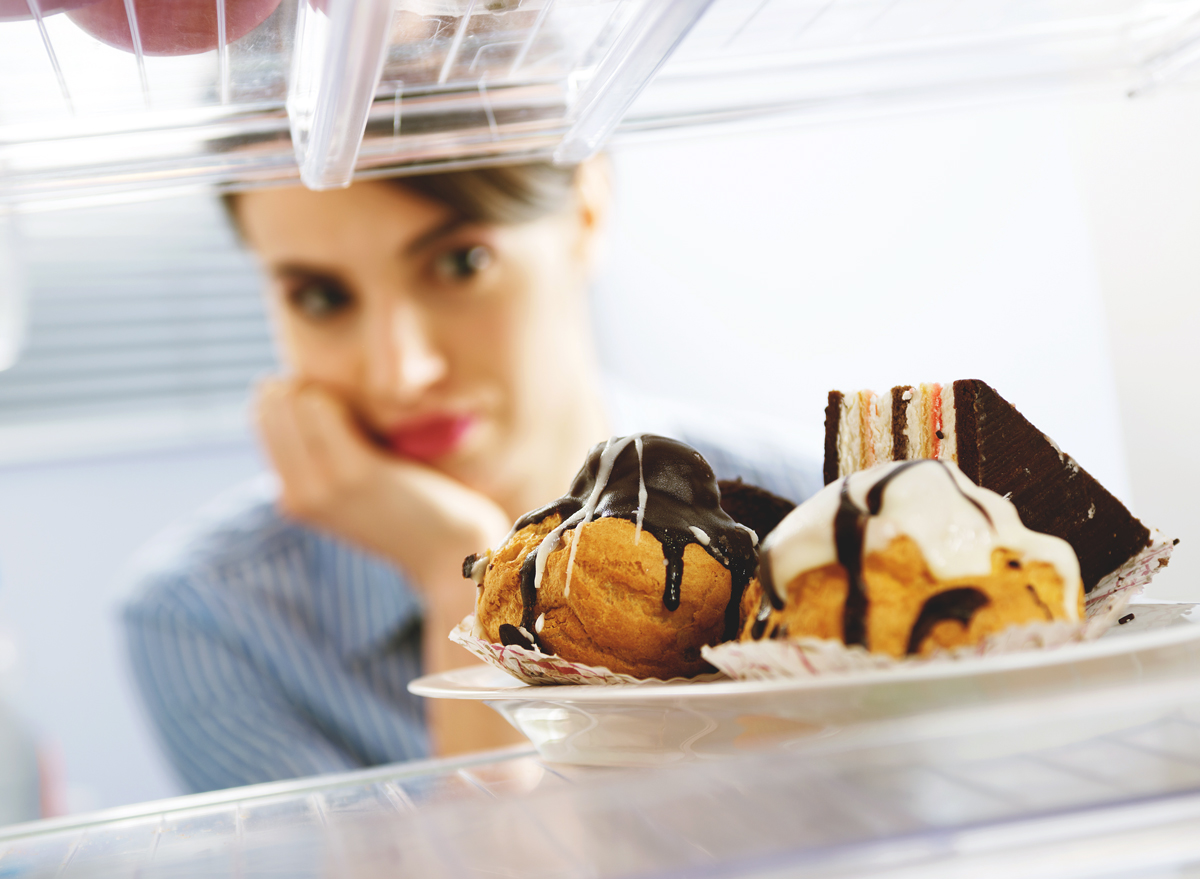
Sure, skipping dessert saves you on calories and sugar. But constantly depriving yourself could lead to an out-of-control binge later on. And if you forgo your favorite sweet treat for a “healthier” version, you may feel less satisfied and reaching for something else to curb that sweet tooth. You’re better off opting for a few bites of your favorite dessert than depriving yourself altogether.

Strange but true: When you think of your meal as a light choice, it can cause your brain to pump out more ghrelin (the hormone that boosts appetite and slows metabolism), according to a Yale University study. To keep your ghrelin levels balanced, stick with restaurant foods that only sound indulgent. For example, if you’re at Chick-fil-A, go for the breaded and fried Chicken Sandwich over the Cobb Salad. The sandwich sounds like the more indulgent alternative, but in reality, eating it over the greens keeps 300 calories and 36 grams of fat off your plate.

If you do a lot of exercises or workouts that require you to sit and lay down, you have to know that you’re not burning a lot of calories, right? So if you refuel afterward like you just went on a long run or hit the weight room, you’re apt to pile on the pounds. “When you’re sitting or lying down, it’s near impossible to get your heart rate up enough to make any significant change to body composition,” explains personal trainer and People magazine’s Sexiest Trainer Alive, Angelo Grinceri. Although yoga and pilates can help you tone up and burn calories, it’s better to mix up your workouts with other heart-pumping activities such as running, swimming, or a HIIT-style circuit.
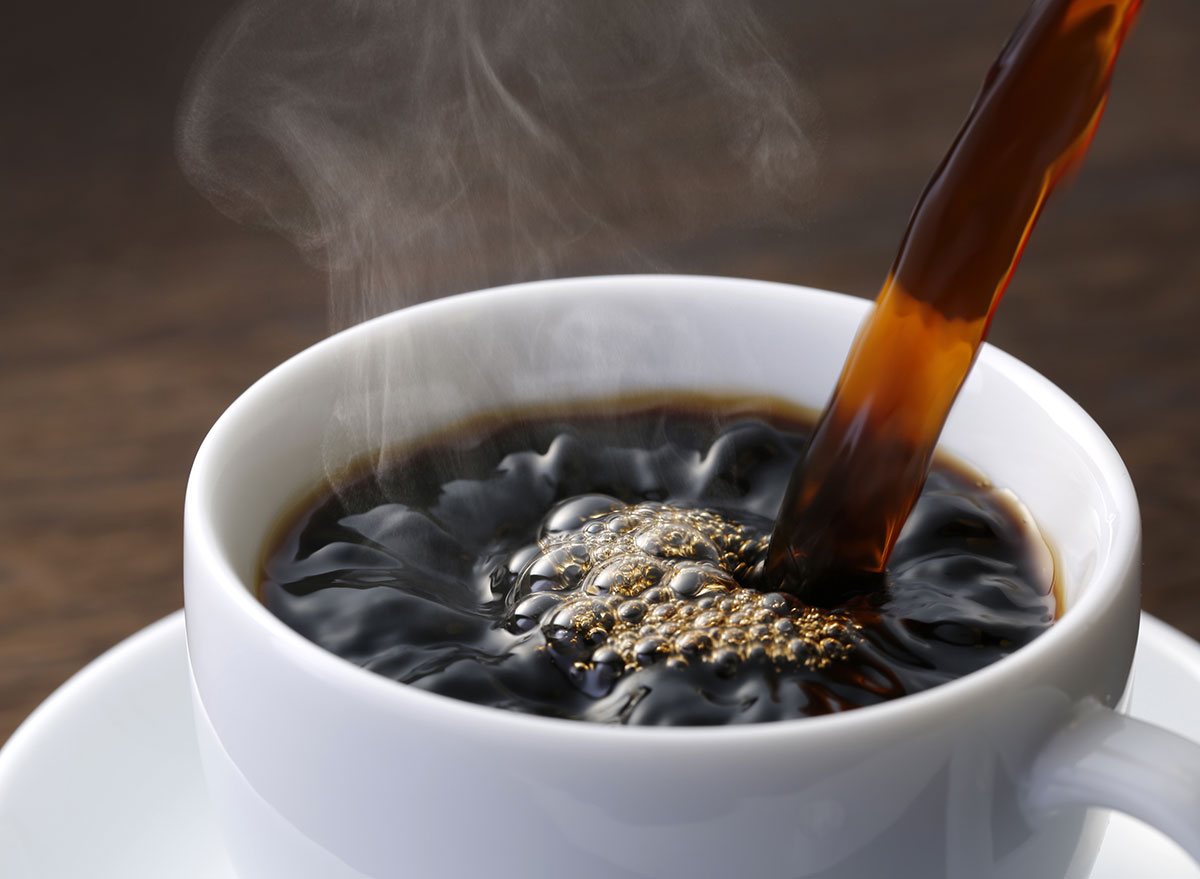
There’s no denying that the syrupy, sugar-laden blended beverages at the coffee shop are calorie bombs. But sticking to a cup of black coffee each morning could actually rev your metabolism; the average metabolic rate of people who drank caffeinated coffee was 16 percent higher than those who drank decaf, according to a study in the Journal of Basic and Clinical Physiology and Pharmacology. Coffee is also an excellent pre-workout beverage too, getting you pumped for your sweat sesh without all the added fillers and artificial sweeteners as the tubs sold at your local supplement store. In fact, a study in Medicine and Science in Sports and Exercise found that cyclists who took a caffeine supplement experienced up to 3.1 percent more power than those who took a placebo. If you always get your cup of joe at Starbucks, make sure your caffeine is doing your body a favor by ordering one of these 13 Best Low-Calorie Starbucks Drinks.


























